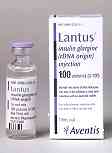
People with diabetes can still bring medical syringes and insulin with them onto aircraft despite new security restrictions introduced as a result of recent tragic events in the USA. New security measures prohibit scissors, razors, nail clippers, knives or needles but they will allow medical syringes, lancets and insulin.
To make sure you don’t run into any problems with airline personnel, the American Diabetes Association (ADA) suggests:
- Call ahead and warn the airline about your diabetes and the supplies you need to carry.
- Bring a letter from your doctor explaining your need to carry syringes/injection devices and insulin.
- Have a copy of your prescription.
The new restrictions on what items can be brought onto aircraft in hand luggage has led to concern about travelling with syringes and insulin. A number of people have been advised that they can either not travel or must put their syringes and insulin in baggage in the aircraft’s hold. This is not the case. Insulin should not be stored in the hold as low temperatures can cause damage to it.
A doctor’s letter explaining the situation should be presented to the airline staff. If problems are encountered, ask to speak to a manager or supervisor. On some airlines, once on board the plane, cabin crew may request that the medication be handed over for storage during the flight. To speed this process, if requested, place your insulins and syringes/needles into a small, separate carrier bag so you can hand the bag to personnel aboard the plane if they request your syringes for safekeeping.
The FAA security guidelines has security guards checking medication more closely. People who have syringes, but do not have the properly labeled insulin, physician’s letter or a copy of their prescription may not be allowed to take syringes onto the plane.
These policies will be in effect for all domestic and international flights in the United States.
Here’s another quick guide on traveling with diabetes from Insurancewith.com
